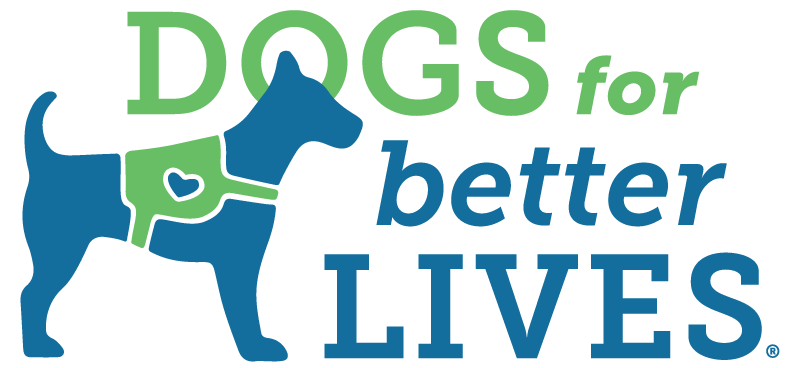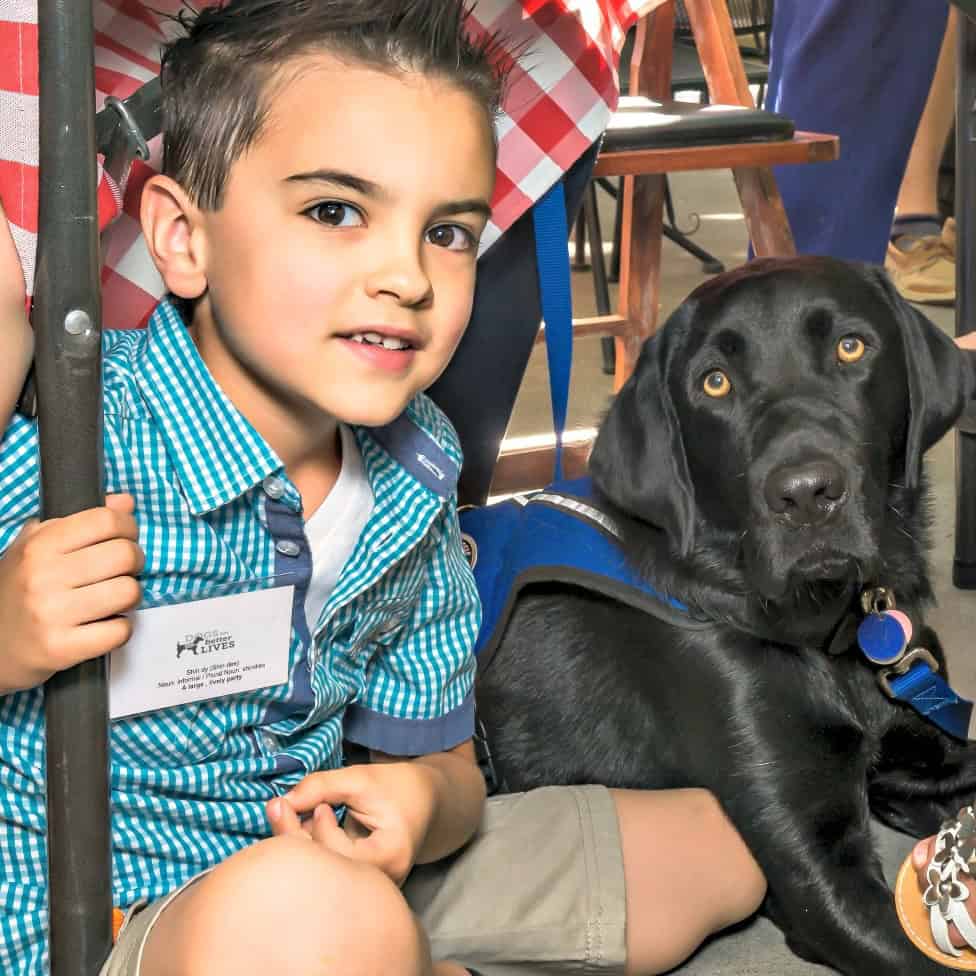Shelter dogs have always been a key piece of our mission and will always be an important part of our programs moving forward. We’re excited to bring you an update on our “From Shelter to Service Dog” program, a collaboration between Dogs for Better Lives (DBL) and Operation Kindness (OPK). This initiative aims to give shelter dogs a second chance as a life-changing Service Dog, through our expert training.
“From Shelter to Service Dog” identifies shelter dogs at Operation Kindness in Texas with the right temperament and skills to become service dogs. These dogs receive specialized training from DBL to become Hearing Assistance Dogs, Autism Assistance Dogs, or Facility Dogs.
Launching the Program
In the first 6 months of the program, there have been some key milestones:
- Hired an Assistance Dog Trainer in the Dallas area to manage volunteers and train the shelter dogs in the program.
- Secured and setting up a training apartment.
- Identified dogs in training who are on track for Assistance Dog work.
Current Program Stats: As of now, we have:
- 2 Active Dogs in Training: These dogs are on their journey to become incredible service dogs, making a difference in the lives of those in need.
- 1 Career Change Dog: Ringo was career changed. He will be adopted out to a loving family through Operation Kindness.
- 22 Approved Foster Families: These dedicated foster families have completed training to support our mission.
- Approximately 40 Interested Fosters: We’re delighted to see so much interest in our program, with around 50 potential foster families eager to join.

Annie, a 1 year old black lab mix that was surrendered at Operation Kindness, is pictured with her foster as she joins DBL’s From Shelter to Service Program.
What Foster Volunteers Say
The impact on the fosters has been profound. When asked what being a part of this program means to them, our fosters had this to say:
“The From Shelter to Service Dog program is such a powerful arrangement. Service Dog programs in general are wonderful, but to add a rescue shelter in the mix allows dogs who are homeless, and perhaps living on borrowed time, an opportunity to achieve what I believe is a dog’s most fundamental need: being a companion and giving and receiving unconditional love,” said Shelter Dog Foster, Cindy.
She added, “It thrills me to play a part in the transition. With a long-term foster, I can help the dog settle in and settle down, get them used to new routines as well as unscripted activities, lean and remember how it feels to be safe and well cared for and loved, and help prepare them for their new life as a Service Dog! And while I know I can’t save them all, I am grateful to help save one at a time.”
Shelter Foster, David, agrees. “It gives me the opportunity to bring together a dog and a person who has had some tough times and give them a forever home, and a forever companionship,” he said.
Why the “From Shelter to Service Dog Program” Matters
The demand for Service Dogs remains high, with long waiting lists. Our program is helping address this need by training more shelter dogs to become Service Dogs, reducing wait times for those in need and transforming the lives of shelter dogs.

Walker, a black lab/hound mix, is pictured in front of the DBL vehicle on his way out on a training trip with Assistance Dog Trainer, Melissa.
Upcoming Growth of the Program
We expect to continue to grow this program so we can serve more dogs, and people, in 2024.
To provide additional support for the From Shelter to Service Dog Program, we will offer a rotation for our Apprentice Assistance Dog Trainers within the program. Our first Apprentice Assistance Dog Trainer will join the program in early 2024. They will be focused on learning how to best train shelter dogs while supporting growth of the program.
In addition, we are hoping to place our first two dogs as Service Dogs in the next two to three months.
Need for Support
Since our shelter dogs live in foster homes, transportation is a daily need for the program. In order to increase the number of shelter dogs in our training program, we’ll need to increase our capacity to transport dogs from their foster homes to our training apartment. As we increase the number of shelter dogs in training, we will also need to increase funding for enrichment treats and supplies.
We are thrilled about the positive impact our “From Shelter to Service Dog” program is making on shelter dogs, their future families, and the lives of people with disabilities. If you want to learn more about the program or become a foster volunteer with Operation Kindness, visit www.dogsforbetterlives.org/shelter.






I am currently looking for a service dog. I live in Port Charlotte Florida and I have been diagnosed with MS for more than 10 years. I tried Paws with a Cause and I was turned down. How does your program work? I need a dog at this time for balance and bracing . I have already broken both of my feet and had surgeries to repair both of them.
Hi Janice! Thanks for reaching out. Our current programs are Hearing Assistance Dogs, Facility Dogs, and Autism Assistance Dogs. You can visit our program pages (https://www.dogsforbetterlives.org/dogs) if you have questions about those program qualifications. If we’re not a fit for you, I’d recommend searching Assistance Dog International’s website. They have a tool that can help you locate the right program for your needs. https://assistancedogsinternational.org/main/looking-for-an-assistance-dog/